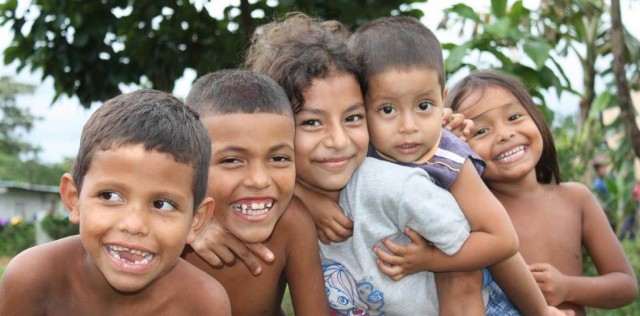
It seems like being happy is en vogue in the international media these days. From the crackdown on Iranian youth making a video to Pharrell Williams’ “Happy” to various indices ranking the level of happiness of people living in the countries around the world, the debate over happiness is on.
Surprisingly (or not) the recent indices come up with somewhat different sets of rankings. To my joy, the latest poll by Gallup, done with 1,500 people from each of 138 countries, put four of the places I have lived or worked among the top 10 happiest places in the world (Panama, El Salvador, Honduras and Guatemala).
The odd juxtaposition is that these are also four countries that have been part of Creative’s joint programming with USAID that works to reduce the high levels of violence.
How does that mesh – when the people interviewed from a variety of income levels expressed high levels of “enjoyment,” “laughing or smiling a lot” and feeling “well-rested,” while also living in three of the countries (El Salvador, Honduras and Guatemala) with the highest murder rates globally?
I was surprised with such positive responses from Salvadorans, Guatemalans and Hondurans to the happiness surveys given high level of gang violence and extortion by gangs. Notably, violence likely contributed to the fact that the least happy people according to this year’s survey, understandably so, are Syrians, Chadians and Yemenis.
To make sense of it, I have to dig back into a time in my life when I had the opportunity to stay at the Connecticut home of the vice president of a major bank while attending an event in New York. The husband was never at his castle-style Tudor home, and his wife seemed to be one of the saddest people I had ever met despite having an overabundance of everything.
A month later, I moved to an orphanage in Mexico to do a year of service, and I became good friends with a family in the small pueblo next to the orphanage. They had nine kids and the bare minimum of comforts (a small vegetable garden, two pigs and an adobe brick home). Yet they were perhaps some of the happiest people I had ever met. They would sing together, laugh together, and—yes—fight and make up together as I have learned is common in many Latin families. They taught me that poverty and misery are not necessarily synonymous.
There are many other features that can build resiliency to an existence of poverty: mainly connection to one’s extended family, organization of social life around a sense of community activities (music, dance, soccer, etc.) and faith.
Given that so many of the countries reporting positive emotions were in Latin America “at least partly reflects the cultural tendency in the region to focus on the positives in life,” according to Gallup. Indeed, this is part of what Gallup gave as the reason for why so many Latin American countries came out high in the poll despite low income levels.
The link of income and happiness is also going through a deeper debate based on more “big data” studies.
Up until just a few years ago, many researchers supported the “Easterlin paradox” which was based on a U.S. economist’s global study that higher income does not necessarily buy higher happiness, mainly because of the concept that people are on a “hedonic treadmill” where the more they have, the more they want, and the less content they are.
The new Gallup research as well as the UN Happiness Index, however, with their larger data sets, found a strong correlation between countries with higher GDP per capita and self-reported well-being. For example, the Gallup study found that people earning more had on average a 10% higher level of satisfaction.
While wealth does show some direct links to happiness overall, the connection doesn’t necessarily hold for finding meaningfulness.
In the Gallup study, people in Sierra Leone, Togo, Chad and Ethiopia said overwhelmingly that they lead meaningful lives at rates much higher than respondents in Japan and France, for example. Many think this is due to the strong correlation between religious belief and a sense of purpose, as well as cultures of strong social connectedness in many poorer countries.
This shows us unequivocally that culture matters. Finding ways for us to tap into cultural norms that strengthen social connectedness, especially in times of conflict, and working with faith-based organizations can help build a sense of meaning and thus resilience, whether for a youth participating in our outreach centers in the barrios of San Salvador, a teacher in our training program in Northern Nigeria, or an Afghan woman living in, in the words of Pharrell Williams, a “room without a roof.”
Michael McCabe is a Senior Associate for Capacity Development at Creative. He first joined Creative in 2010 as the Chief of Party of the Alcance Positivo program in Panama.